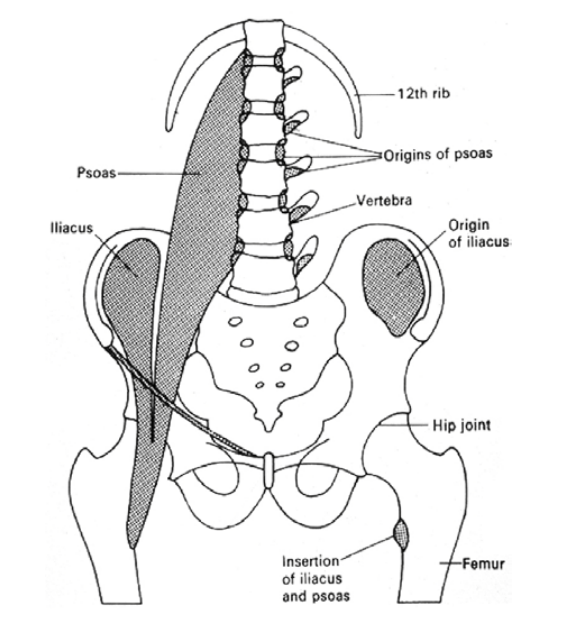Bleeding disorders: Iliopsoas bleed
Translations available: Spanish
What is the iliopsoas muscle?
The iliopsoas ("il-e-o-SO-us") muscle is a large muscle that has an attachment to your spine, pelvis and thigh bone (see diagram). It is made of the iliacus and psoas muscles combined. The job of this muscle is to bend your hip and bend your body forward.

What are the signs of an iliopsoas bleed?
- Pain in lower groin, abdomen and lower spine.
- Thigh may be cool to the touch.
- Numbness/tingling along the thigh and across the knee.
- Unable to walk without pain.
- Unable to do a sit up without pain.
- Unable to straighten hip, hip flexed out in a "frog leg" position.
- Toe walking as hip is flexed.
How is it treated?
- You will probably be on bed rest and receive some type of medical treatment prescribed by your hematology team.
- Do not walk or exercise until the pain is better and you are given instruction for exercise and walking from your health care team.
Exercise program
Move slowly in the treatment of this muscle bleed. The iliopsoas muscle is used for all leg movements and can be easily re-injured. A re-bleed into the same muscle will be more severe and delay your mobility and walking. An exercise program under the direction of a physical therapist may include:
- Pool exercise, if available.
- Gentle movement of your hip, knee and ankle (with minimal pain).
- Muscle strengthening.
- Walking with crutches with only your toe touching the ground on the "bad side." Make sure NOT to hold your leg off the ground, as this makes the iliopsoas muscle work harder and can cause more damage.
- You may return to walking without crutches when your strength and range of motion has fully returned.
- Additional stretches and muscle strengthening directed by a physical therapist.
What else do I need to know?
Watch for signs of a re-bleed, which are the same symptoms listed previously.
Questions?
Children's Hospitals and Clinics of Minnesota
2525 Chicago Avenue South
Minneapolis, MN 55404
Last Reviewed 7/2015 © Copyright
This page is not specific to your child, but provides general information on the topic above. If you have any questions, please call your clinic. For more reading material about this and other health topics, please call or visit Children's Minnesota Family Resource Center library, or visit www.childrensmn.org/educationmaterials.
© 2024 Children's Minnesota
